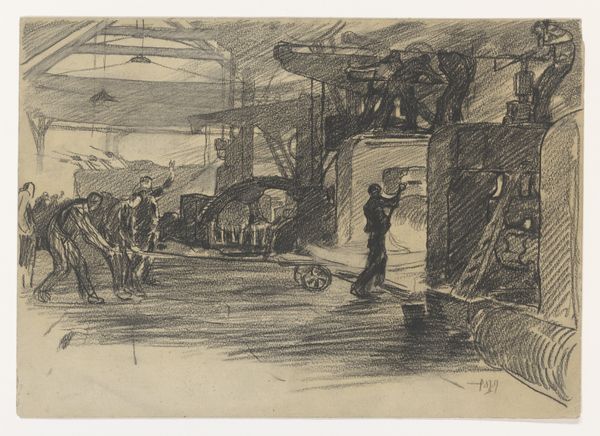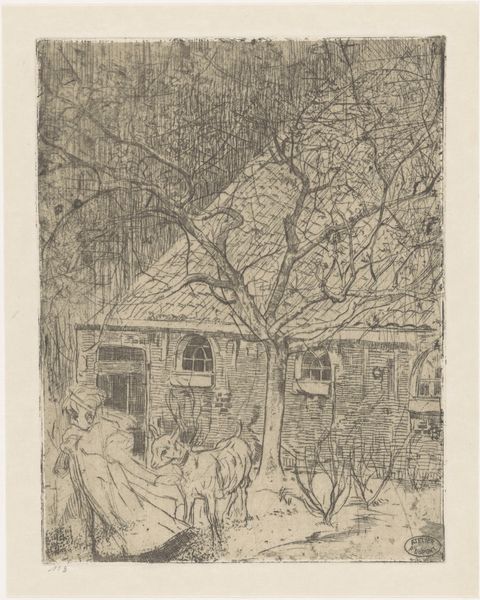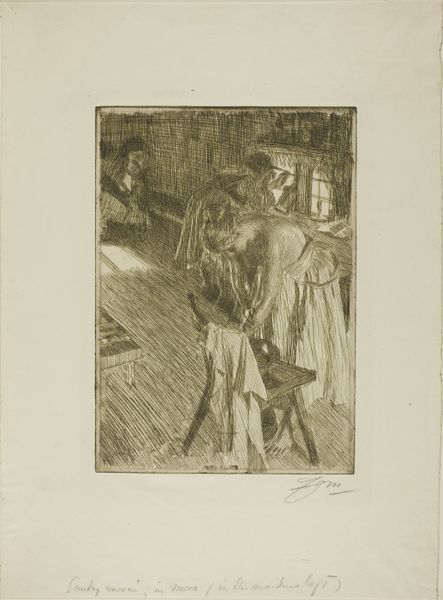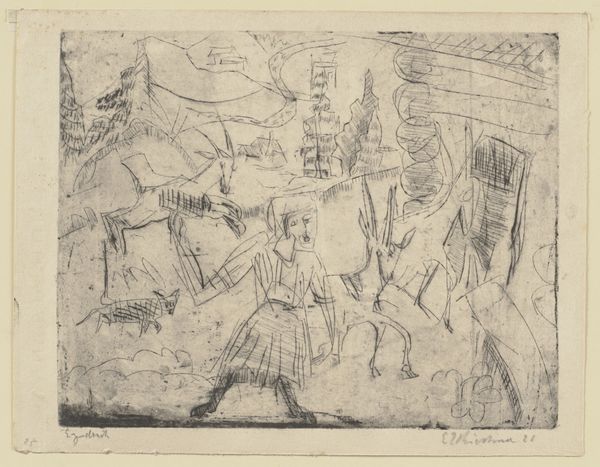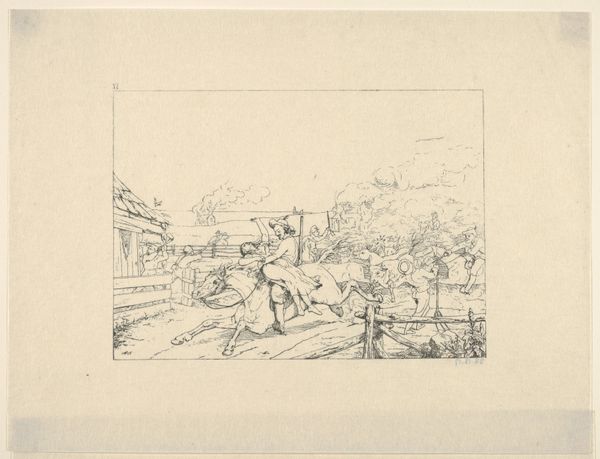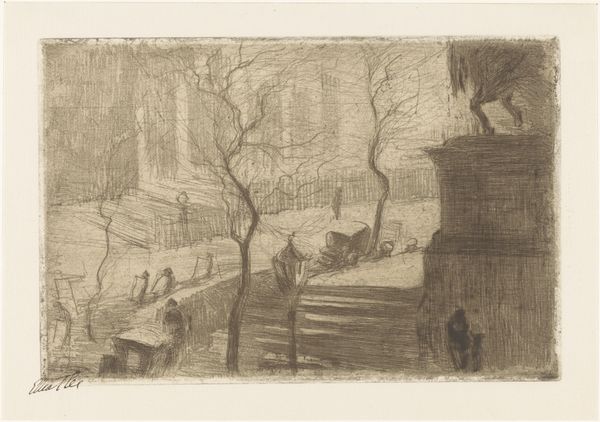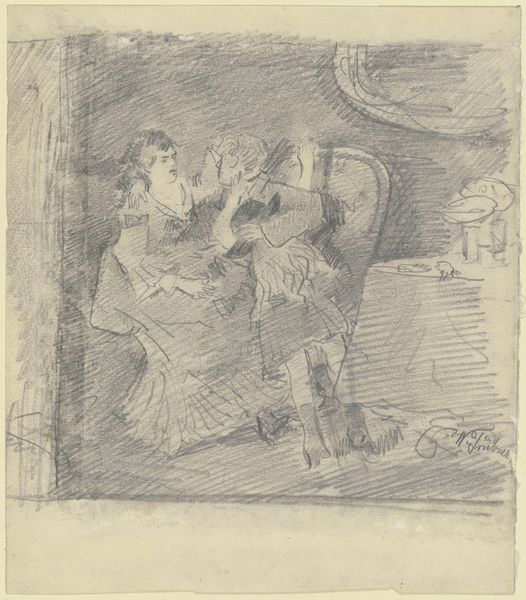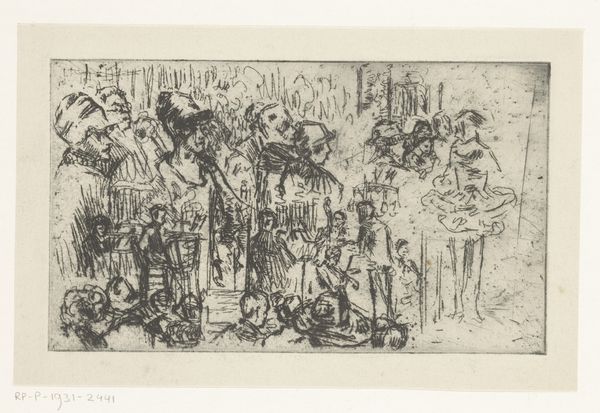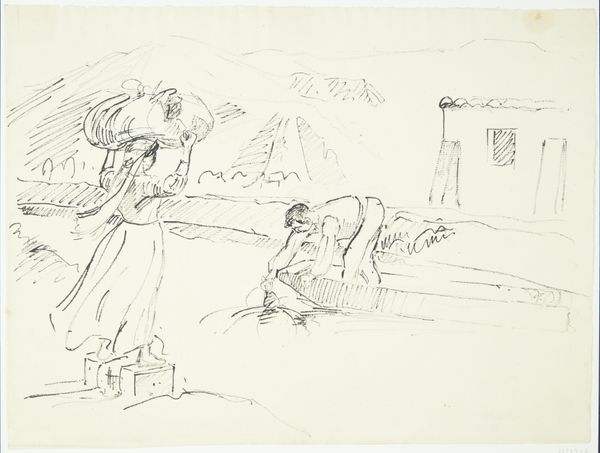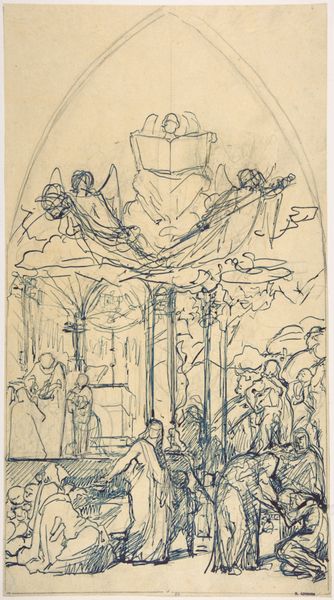
print, etching
# print
#
pen sketch
#
etching
#
pencil sketch
#
sketch book
#
personal sketchbook
#
sketchwork
#
ink drawing experimentation
#
geometric
#
pen-ink sketch
#
expressionism
#
pen work
#
sketchbook drawing
#
cityscape
#
sketchbook art
Dimensions: plate: 13.1 × 18.2 cm (5 3/16 × 7 3/16 in.) sheet: 32.3 × 44.3 cm (12 11/16 × 17 7/16 in.)
Copyright: National Gallery of Art: CC0 1.0
Editor: Here we have Rudolf Grossman’s 1913 etching, "Montmartre." It's a flurry of lines, capturing a vibrant, bustling cityscape. It feels almost like a memory, slightly blurred and full of movement. What jumps out at you when you look at it? Curator: Oh, it's like peering into a dream, isn't it? Or perhaps eavesdropping on a lively street corner through a rain-streaked window. Grossman, he's not just showing us Montmartre, he’s letting us feel it. See how those quick, darting lines create a sense of restless energy? And how the figures seem to melt into their surroundings? Does it strike you as a happy or a sad street? Editor: Hmm, neither, actually. To me it’s more neutral, more focused on activity and people. But why use such a raw, almost unfinished style? Wouldn't a more polished rendering do more justice to such a lovely city? Curator: But my dear friend, that "unfinished" quality, as you call it, IS the justice. Montmartre wasn't a pristine postcard; it was alive, imperfect, and constantly evolving. Expressionists weren’t after reality but at its emotional resonance, using exaggeration and distortion, not unlike memories often do. Maybe Grossman’s print offers an even more honest portrayal. Don't you think? Editor: That makes sense. I hadn't considered the emotional aspect so explicitly. So, in a way, the medium itself—the rough etching—becomes part of the message. Curator: Precisely! Art is a trickster! Never assume what you see is all you get. You might discover some hidden beauty along the way. Editor: That’s definitely given me a fresh appreciation for both this piece and the Expressionist movement as a whole. Thanks for sharing your insights. Curator: My pleasure! Keep looking and keep wondering! Art rewards the curious!
Comments
No comments
Be the first to comment and join the conversation on the ultimate creative platform.
